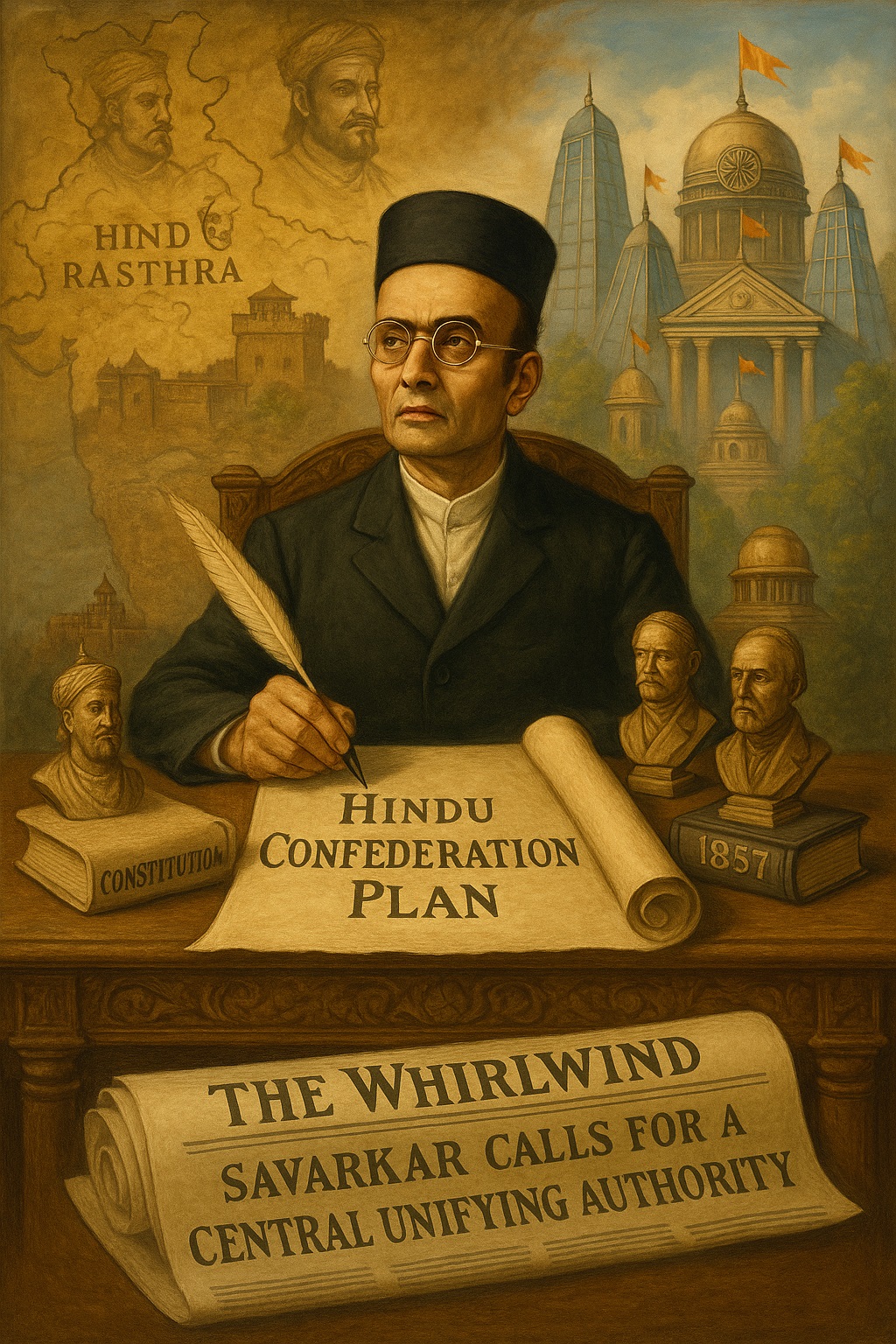Political Dimension of Hindutva, Part 4
When envisioning the future of Hindu Rashtra, Vinayak Damodar Savarkar did not propose a rigid, fixed model of governance. Instead, his ideas evolved within the historical and political context of his time. Rather than outlining a single, comprehensive framework, Savarkar explored various possibilities, ranging from a constitutional monarchy in the form of a federal union of states to a full-fledged democratic republic. His vision was deeply influenced by historical precedents and his strategic understanding of statecraft.
The Evolution of a Political System
Savarkar’s thoughts on governance were not static. They developed in response to the circumstances he analyzed, and his writings reflect an effort to derive the best system for a strong and self-sustaining Hindu state. His early ideas linked the governance of Hindu Rashtra to the supremacy of the nobility, drawing inspiration from the history of the Marathas. In his work Hindu-Pad-Padashahi, he explored the idea of a “Confederated Nation,” likening it to a “Republican United States.”
His conceptualization of governance seems to have been influenced by Bismarck’s model of empire-building. In this framework, Maharashtra was envisioned to play a role similar to that of Prussia in the German unification or the Kingdom of Piedmont in the Italian Risorgimento (Savarkar 1971:204, 217). This suggests that Savarkar saw Maharashtra as the nucleus around which a broader “Hindu Confederation” could coalesce.
A Hindu Confederation: The “United States of India”
Savarkar repeatedly emphasized that, unlike other Hindu communities, the Marathas had demonstrated their capability to build a powerful Hindu empire—one that could expand and assimilate the best aspects of European governance while maintaining its indigenous character. He imagined a state structure that could be called the “United States of India” or even a “Hindu Empire,” structured as a confederation of Hindu states, much like the German Empire was built on the German principalities (Savarkar 1971:204).
This idea implies a political system where post-colonial India would be a federation of different Hindu kingdoms, led by a King of Kings—an emperor overseeing a coalition of regional rulers.
The Role of the Emperor: A Unifying Symbol
Savarkar’s admiration for historical monarchy is also evident in his work The War of Independence 1857, where he expresses deep respect for the Emperor of Delhi. He positions the emperor as a key figure in the 1857 uprising against the British, portraying him as the national integrating force. This highlights Savarkar’s belief in the need for a central unifying authority that could rally various Hindu factions into a cohesive political force.
Final Thoughts – Adaptive Governance for a Self-Reliant Hindu Rashtra
Savarkar’s ideas on governance were fluid and adaptable. Rather than prescribing a rigid system, he offered multiple frameworks based on historical examples and strategic necessities. Whether through a federation of Hindu states, a constitutional monarchy, or a democratic republic, his ultimate goal was the establishment of a powerful, self-reliant Hindu Rashtra. His vision invites further exploration and discussion in today’s political landscape, as debates around governance and identity continue to shape modern India.
Sources:
SAVARKAR, Vinayak Damodar. 1971. Hindu-Pad-Padashahi or a review of the Hindu empire of Maharashtra. Bharti Sahitya Sadan (Fourth Edition): New Delhi.


Leave a Reply